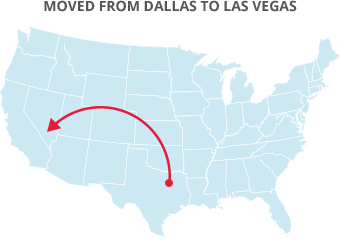


Now that you have used up a gigantic mound of boxes and tape, your garage is overflowing with packed boxes, and you're eating off of with forks you took from the fast food joint, the simple part is over. Now that you are almost there, a day or two ahead of the move itself, it's time to work on the last few items.
You will most likely need a ladder for the next to-do items, along with the tools outlined in our last post. If you have had heavy window treatments you might need some wood filler, also. If you are DIY moving, you will need moving blankets, baggies or small containers, and plastic wrap on a large spool for furniture, mirrors, art and lighting.
Be Flexible and Plan Ahead
Packing for a move takes a long time, and you should plan for that if you are going to do it yourself. A large dry-erase calendar will help you stay on track, and you can edit it as needed. There are three stages of a move--purging, packing, and the move itself--and managing your progress with steps 1 and 2 will make step 3 a lot less nerve-reacking.
One of the biggest mistakes you can make as a pack-it-yourselfer is to overweight boxes. Books are the worst offender; they are normally small in size but they are heavy. Four or five hardbacks is sufficient for a small box, so fill in the rest of the box with lighter weight accessories--coasters, photos, magazines--that will go back in the same room or part of the house with the books themselves.
The Day Prior to the Big Move in Wichita Falls
Now that the big day is tomorrow, it's time to tackle the pantry and the fridge. Unless you’re moving right around the corner, you should probably take all the new non-perishables to a food pantry, and toss the rest. For a short trip, you can put perishables in coolers containing dry ice, but food is a lot like your other stuff--is unpacking those half-empty jelly jars worth your time?
Movers most of the time want the art and mirrors protected in bubble wrap or crated before they load them. If not, you still need to pad each piece (flannel sheets, beach towels, etc. work great between pieces) and move them in your car instead of the moving van. You can secure lighting with a seatbelt if you're moving yourself.
If you assembled any of your furniture, now's when you need to disassemble it. Most furniture can be dismantled with a slot or Phillips head screwdriver and a small hammer. Keep the bolts, screws, and other hardware in a baggie or container and label it, and secure it to the inside of a bed rail or a drawer so you can put it all back together again without having to pay a visit to the local hardware store. It is not a bad idea to take photos of the hardware in the event that something gets lost--and it will.
Pack your cleaning supplies and plan on taking them to the new residence in your car--the chemicals can't go on the truck.
Cover furniture in the moving blankets and make sure the blankets stay put with the shrink wrap. The wrap won't ding finishes and keeps drawers in place when chests are moving around.
Moving Day in Wichita Falls
If you've spent the last night in your home, you probably slept on mattresses on the floor, since your beds have been disassembled. You've also packed a small suitcase with necessities for the day since all your clothes packed. Put your linens and towels in a big box or bag, and away you go. Movers schedule their days in blocks, so a bigger move could be a multiple day project. The movers will likely be at your house bright and early and ready to get started—their time starts when they get there, not after you've had your coffee. It's going to be a strenuous day, so respect their time and expertise by being prepared for them.
Follow these tips for proper packing and you'll be incredibly pleased with your new residence—expecially when you can find the coffee pot.

